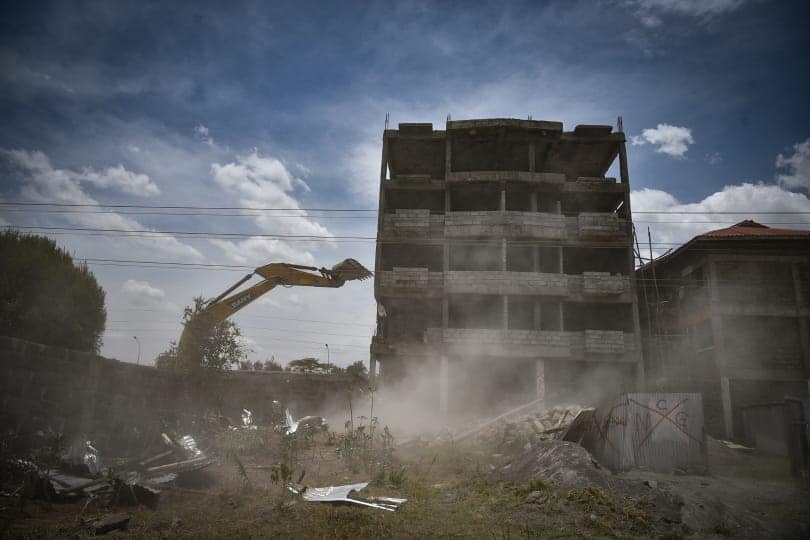Nakuru County officials have enforced an order by the National Construction Authority (NCA) to demolish an unsafe building in Naka Estate, within Nakuru Town East Sub-County.
In an operation marked by heightened security, officials bulldozed down one block of flats which was still under construction with residents saying they were caught unawares in the midday operation.
County Executive Committee Member for Lands, Housing and Physical Planning Mr Joseph Kiuna who supervised the exercise said the Four-storey building had cracks and had been declared inhabitable by NCA.
“The developer has for the last 18 months failed to heed to regulations and guidelines issued by the County and National Construction Authority (NCA) to ensure safety of the building. When he failed to do this, a demolition notice was issued to him to bring down the building at his own cost,” Kiuna said.
“Owners of houses with minor defects have been given a month to fix problems like ventilation and lighting while developers of buildings classified under high-risk have been given two months to demolish them,” affirmed Mr Kiuna.
The demolition comes against a background of a report released by NCA three months ago painting a grim situation over safety of buildings, which revealed that out of every new 100 buildings in Kenya, 35 were unsafe. The report estimates that over 200 Kenyans died between 1990 and 2019, in the 87 compiled cases of building failures and collapse. Nairobi led with 33 cases followed by Kiambu with 14 cases while Nakuru and Mombasa had five cases each.
The CEC who was accompanied by his Roads, Transport and Public Works counterpart Engineer Reuben Maritim said his office would recommend to relevant professional bodies and government agencies that action be taken against the architect and engineer who supervised the construction work of the building that was found to be structurally unsound.
Mr Kiuna cited poor workmanship, substandard materials, poor structural, non-compliance with statutory and safety requirements and inadequate maintenance as major cases of buildings’ collapse.
In January 2015 in one of the infamous cases 52 people were killed and 32 seriously injured after a seven-storey residential building collapsed in Huruma, Nairobi.
Engineer Maritim said though a building may be structurally sound, it could be declared unsafe if there is no proper lighting inside or the access is not good. He called on both national and county governments to come up with a shared central depository for data on failure and collapse of buildings, to make it easier for monitoring and evaluation.
“Insurance of buildings should be made mandatory to cater for any eventualities. This will also facilitate access to historical data from insurance companies on failure and collapse of buildings, especially on the value of the relevant investments,” suggested the Roads, Transport and Public Works CEC.
The National Construction Authority’s report further identified lack of a comprehensive construction policy as one of the issues that has left regulation of the industry largely uncoordinated.
“It is therefore recommended that the ministry responsible for construction urgently finalizes development of construction policy,” said the report.
Further, the report recommends the empowering of regulatory boards to solve unethical practices and enforce professional standards, and also reviewing the licensing criteria for contractors and construction workers.
It also recommends that NCA be empowered to carry out investigations in cases of building collapse and recommend prosecution. According to the report, the failure and collapse of buildings were key impediments to investment in the construction industry.
By Anne Mwale




